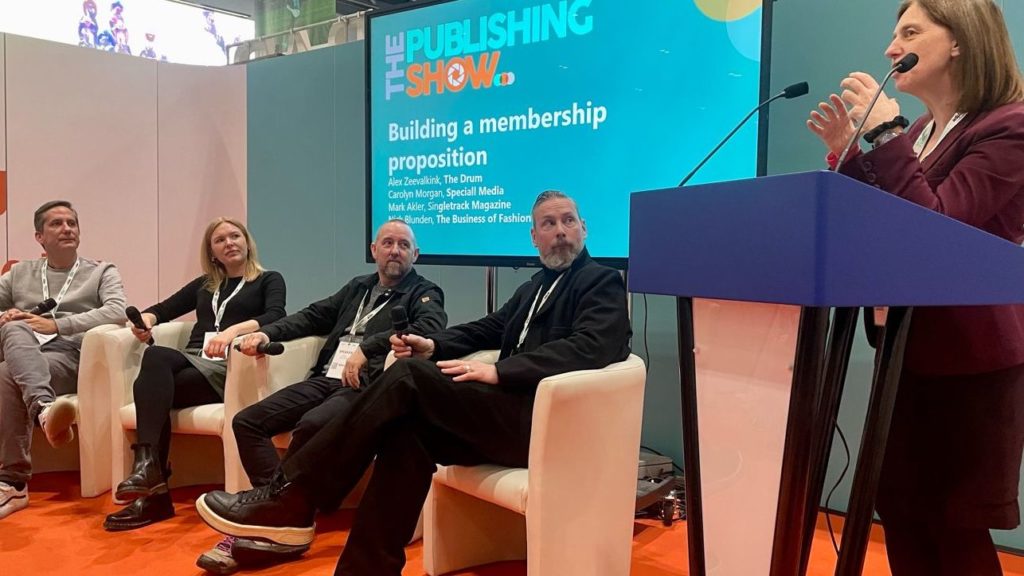Publishers and media businesses are increasingly moving to membership business models. Is membership just the latest buzz word, or is there an agreed definition of what membership means?
I chaired two panels at The Publishing Show with media leaders from The Drum, Business of Fashion, Singletrack, Incisive Media and Kademy who were all at different stages of the membership journey. Here is their advice on building a membership proposition.
What makes membership different?
A subscription is simply access to a package of content. Membership means access to a like-minded community (whether consumer or professional) with the ability to meet or converse with other members, in person or online. It also implies that members have a degree of influence over how the package of member benefits evolves, with direct access to the editors or subject matter experts at the heart of the organisation.
Successful membership businesses talk about the idea of exclusivity, status or privileged access, where members feel like VIPs or insiders. While the original decision to join a membership group might be rational, based on access to tangible reference resources or learning, the decision to stay is more emotional, a sense of belonging to a community.
Identifying your membership community
Be super clear when defining your membership community. Do they share a consumer passion or interest, or do they have a specific job role in a particular type or organisation? Not everyone within your broader audience will be interested in a membership proposition. In B2B markets, a good starting point is often senior leaders with an interest in exclusive networking with their peers. People who want to progress their career in their industry, and are looking for their next move, are particularly keen on building their network and profile.
Building a membership proposition
Once you have defined your target segments, you need to talk to them. Membership is an emotional purchase, so individual conversations, however informal, are the key to understanding those deeper motivations – and what pain points your package could help solve.
Many membership propositions evolve over time – they may include content, online courses, small group meetups, member directories, in person events, online communities. Better to start with a simple package, and then listen to feedback before adding features. Several panellists also admitted to dropping features that they originally thought would be valuable – there is no shame in a bit of pruning!
How to measure value
Even established membership propositions need to be continually tested. The priorities and needs of your community can change over time, and formerly valuable features might no longer be relevant. Analytics and data can measure actual activity, but sometimes members value a feature that they have not yet used but like to knew could be there for them in future.
Membership is as much about art as science – and so a continual programme of discussing with members what they value can help you understand the perfect package.
Setting prices and tiers
More membership packages now have multiple packages or tiers. This allows new members to sample the basic package, and then observe the VIP benefits which premium members enjoy. Or you might want to offer a different package to CEOs or other leaders in your community, so they can connect exclusively with each other. Basic packages also allow you to offer an alternative to members cancelling based on budget or price.
In B2B markets, corporate or team packages work well, as the decision maker can nominate colleagues to replace those who leave the sector. In one consumer specialist market, the online community forum was open to free members, but paying members had different icons and could access extra features, so they were visibly different.
What drives engagement and retention?
Online communities can provide good all year round engagement, even if only a minority post. In person events build personal connections, and judicious promotion to those who missed them can create an appetite to attend future events. Access to editorial teams and other experts, whether online or in person, is highly valued. Building an emotional connection, or sense of belonging, does improve retention rates over time.
What skills and processes needed?
Events and networking must be closely integrated into the membership package. And editorial teams will need to invest time into both in person and online engagement with members. In some former publishing businesses, this presents a cultural challenge for some editors. Membership also means a different approach to content: less newsy and more evergreen, practical reference material. Researching members is a continuous process, so needs either dedicated resource or to be built into the day job.
How to launch a membership proposition
Make sure you have done your research and identified current pain points and a valuable package that delivers value. Then identify a core group of founding clients. They will allow you to name drop to prospective clients, form the nucleus of your community, and provide ongoing feedback on what is working and what is valued.
Membership is not a quick fix – it’s a marathon not a sprint. You will need to invest in research, editorial time and facilitating networking and events for a year or two. But then, once the member community is established, you will start to get referrals and it will become more valuable as your content and reach grows.
If you are contemplating developing a membership community and would like to talk through your options, please get in touch for a chat over a real or virtual coffee.
About the author
Carolyn Morgan has acquired, launched, built, and sold specialist media businesses in print, digital and events. She now advises niche consumer and B2B publishers on developing new products and digital revenue streams as a consultant and NED.
Find out more about the advice we provide for publishers

